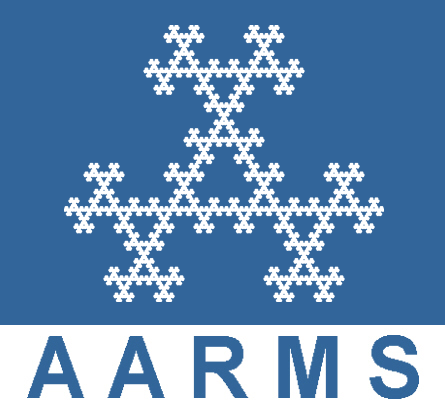Réunion d'hiver SMC 2016
Niagara Falls, 2 - 5 décembre 2016
Équations aux dérivées partielles géométriques, équation d'Einstein et relativité mathématique
Org: Hari Kunduri (Memorial University) et Eric Woolgar (University of Alberta)
[PDF]
Org: Hari Kunduri (Memorial University) et Eric Woolgar (University of Alberta)
[PDF]
- AGHIL ALAEE, University of Alberta
Mass-angular momentum-charge inequality in minimal supergravity [PDF]
-
Recently, the investigation of general relativity in higher dimensions $(D\geq 5)$ has attracted a great deal of interest for a number of physical reasons, such as string theory. The minimal supergravity is the simplest supersymmetric generalization of general relativity in higher dimensions. In practice, string theories are often analyzed within the supergravity approximation. In this talk, I will give a brief review of geometric inequalities in higher dimensions. In particular, I will present a proof of mass-angular momentum-charge inequality for a broad class of maximal, asymptotically flat, bi-axisymmetric initial data within the context of 5-dimensional minimal supergravity. I further show that the extreme charged Myers-Perry black hole initial data are the unique minimizers. Finally, I will present a rigidity statement for the relevant BPS bound, and give a variational characterization of BMPV black holes (This is a joint work with Marcus Khuri and Hari Kunduri).
- SPYROS ALEXAKIS, Toronto
- STEFANOS ARETAKIS, University of Toronto
Asymptotics for the wave equation and the black hole stability problem [PDF]
- STEFANOS ARETAKIS, University of Toronto
-
The asymptotic behavior of solutions to the wave equation on curved backgrounds is closely connected with various important problems in general relativity such as the strong cosmic censorship and the black hole stability problem. In this talk, I will present a new technique that allows us to obtain the precise late-time asymptotics for solutions on such backgrounds. This is joint work with Y. Angelopoulos (UCLA) and D. Gajic (Imperial).
- ERIC BAHUAUD, Seattle University
Low regularity conformally compact Einstein metrics [PDF]
-
A $C^2$ conformally compact Einstein metric has sectional curvature decay to $-1$ up to corrections that are quadratic in the boundary defining function. In this talk I'll discuss the relationship between the curvature decay rate of a generic asymptotically hyperbolic metric and the regularity of the conformal compactification. I then discuss recent work with John M Lee that proves the existence of a low regularity conformally compact Einstein metric with quadratic curvature decay.
- TRACEY BALEHOWSKY, University of Toronto
Determining a Riemannian metric from areas of minimal surfaces [PDF]
-
The classical boundary rigidity problem in Riemannian geometry asks whether it is possible to determine the Riemannian metric on a manifold with boundary from knowledge of the distance between any two boundary points. There has been considerable work on various special cases of this problem by Gromov, Michel, Croke, Burago and Ivanov, Pestov and Uhlmann, and most recently by Stefanov, Uhlmann and Vasy.
In this talk, we address an analogous problem with the data consisting of areas of minimal surfaces rather than of lengths of geodesics. More precisely, for any simple closed curve on the boundary, we are given the area of the area-minimizing surface(s) bounded by the curve. We show that for certain compact, connected Riemannian 3-manifolds with boundary this information uniquely determined the metric in the interior up to diffeomorphisms that fix the boundary. (joint work with S. Alexakis and A. Nachman.)
- LYDIA BIERI, University of Michigan, Department of Mathematics, Ann Arbor, MI 48109, USA
The Cauchy Problem for the Einstein Equations and Gravitational Radiation [PDF]
-
In Mathematical General Relativity (GR) the Einstein equations describe the laws of the universe. This system of hyperbolic nonlinear pde has served as a playground for all kinds of new problems and methods in pde analysis and geometry. An interesting feature of GR is the phenomenon of gravitational radiation. In 2015, Advanced LIGO measured gravitational waves for the first time. Two black holes merging are sending out gravitational waves, which are nothing else but the fluctuation of the spacetime curvature. In order to understand this radiation as well as the dynamics of the gravitational field, we have to investigate the Cauchy problem for the Einstein equations. I will talk about geometric-analytic results on gravitational radiation and the memory effect of gravitational waves. We will connect the mathematical findings to experiments. I will also address recent work with David Garfinkle on gravitational radiation in asymptotically flat as well as cosmological spacetimes.
- ARMANDO CABRERA, University of Connecticut
On the instability of the Riemannian Penrose inequality in higher dimensions [PDF]
-
Mantoulidis and Schoen constructed 3-dimensional asymptotically flat initial data sets with prescribed horizon boundary, whose mass can be made arbitrarily close to the optimal value in the Riemannian Penrose inequality, while the geometry of the horizon is far from being rotationally symmetric. In this talk we will describe an adaptation of this construction that leads to higher dimensional black hole initial data sets with analogous properties. This talk is based on joint work with Pengzi Miao.
- JEFF CASE, Penn State University
Conformally covariant operators and scattering theory [PDF]
-
Using scattering theory on Poincare--Einstein manifolds, Graham and Zworski defined a family of conformally covariant pseudodifferential operators on the boundary with principal symbol that of fractional powers of the Laplacian. I will present an equivalent characterization of these operators as Dirichlet-to-Neumann operators. As applications, I will discuss a new sharp Sobolev trace inequality for traces of functions in $W^{2,2}$ and a positivity result for the Green's function of the conformally covariant operator $(-\Delta)^{3/2}+\mathrm{l.o.t.}$
- AILANA FRASER, University of British Columbia
Existence and regularity of harmonic maps into CAT(1) spaces [PDF]
-
The celebrated work of Eells and Sampson initiated a wide interest in the study of harmonic maps between Riemannian manifolds, and harmonic maps have proven to be a useful tool in geometry. A more recent development is the harmonic map theory for non-smooth spaces. The seminal works of Gromov-Schoen and Korevaar-Schoen consider harmonic maps from a Riemannian domain into a non-Riemannian target. Further exploration of harmonic map theory to the singular setting includes works of Jost, J. Chen, Eells-Fuglede and Daskalopoulos-Mese. The above mentioned works all assume non-positivity of curvature. In this talk I will discuss joint work with Breiner, Huang, Mese, Sargent, Zhang on existence and regularity results for harmonic maps when the target curvature is bounded above by a constant that is not necessarily 0.
- PANAGIOTIS GIANNIOTIS, University of Waterloo
Ricci flow from spaces with isolated conical singularities [PDF]
-
In this talk I will present joint work with Felix Schulze on the short-time existence of the Ricci flow from initial data with isolated conical singularities. Assuming the links of the cones that model the singularities are spheres with curvature operator greater that one, we construct a smooth Ricci flow which achieves the initial condition in the Gromov-Hausdorff sense and smoothly away from the singular points. Moreover, the tangent flow at each singular point is the unique, positively curved, gradient Ricci expander that is asymptotic to the cone modeling the singularity.
- SIAO-HAO GUO, Rutgers University
Analysis of Velázquez’s solution to the mean curvature flow with a type II singularity [PDF]
-
J.J.L. Velázquez in 1994 used the degree theory to show that there is a perturbation of Simons' cone, starting from which the mean curvature flow develops a type II singularity at the origin. He also showed that under a proper time-dependent rescaling of the solution around the origin, the rescaled flow converges locally uniformly to a minimal hypersurface which is tangent to Simons' cone at infinity. In this talk, we will present that the rescaled flow actually converges locally smoothly to the minimal hypersurface, which appears to be the singularity model of the type II singularity. In addition, we will present that the mean curvature of the solution blows up near the origin with a rate which is smaller than that of the second fundamental form. This is a joint work with N. Sesum.
- ROBERT HASLHOFER, University of Toronto
Ricci curvature and martingales [PDF]
-
We generalize the classical Bochner formula for the heat flow on a manifold M to martingales on the path space PM, and develop a formalism to compute evolution equations for martingales on path space. We see that our Bochner formula on PM is related to two sided bounds on Ricci curvature in much the same manner as the classical Bochner formula on M is related to lower bounds on Ricci curvature. This establishes a new link between geometry and stochastic analysis, and provides a crucial new tool for the study of Einstein metrics and Hamilton’s Ricci flow in the smooth and non-smooth setting. Joint work with Aaron Naber.
- SHAOXIONG HOU, Department of Mathematics and Statistics, Memorial University of Newfoundland
A mixed volume from the anisotropic Riesz-potential [PDF]
-
As a geometrical understanding of the maximal gravitational potential in computational and mathematical physics, this talk investigates a mixed volume induced by the so-called anisotropic Riesz-potential and establishes a reverse Minkowski-type inequality.
As one of the applications, some embedding problems of function spaces in PDEs are improved.
- MARCUS KHURI, Stony Brook University
The area-angular momentum-charge inequality for black holes in cosmological spacetimes [PDF]
-
We establish the conjectured inequality between area, angular momentum, and charge for stable apparent horizons in spacetimes with positive cosmological constant, and show that it is saturated precisely for extreme Kerr-Newman-de Sitter data. As with previous inequalities of this type, the proof reduces to minimizing a functional that is related to a renormalized harmonic energy. In this case the maps are from $\mathbb{S}^2\rightarrow\mathbb{H}_{\mathbb{C}}^2$, and the functional is significantly distorted by the presence of a cosmological constant. Nevertheless we observe that the functional is convex along geodesic deformations, guaranteeing a unique minimizer. This observation also simplifies previous proofs of less embellished inequalities. This is joint work with E. Bryden.
- GANTUMUR TSOGTGEREL, McGill University
A prescribed scalar-mean curvature problem [PDF]
-
In this talk, we will be concerned with a problem of prescribing scalar curvature and boundary mean curvature of a compact manifold with boundary. This is an ongoing work motivated by the study of the Einstein constraint equations on compact manifolds with boundary, and builds on the results of Rauzy and of Dilts-Maxwell.
- WILLIAM WYLIE, Syracuse University
Weighted Ricci curvature with synthetic dimension 1 [PDF]
-
We study Riemannian and Lorentzian manifolds with density that satisfy weighted Ricci curvature
bounds of effective dimension one, a weaker condition than has previously been studied.
The main observation is that the weighted Ricci tensor in this case carries an extra
structure, as it is the Ricci tensor of a natural torsion free connection. Using this
connection we prove sharp generalizations of the basic comparison results for Ricci curvature lower bounds. A general feature of all of our rigidity results is that warped or twisted products, as opposed to
direct products are characterized. Some of the material in this talk comes from joint works with Eric Woolgar and Dmytro Yeroshkin.
- JIE XIAO, Memorial University
p-capacity in 3-manifold [PDF]
-
As an inclusive $(1,3)\ni p$ - extension of Bray-Miao's Theorem 1 and Corollary 1 in Invent. Math. 172(2008)459-475 for $p=2$, this talk presents a sharp isoperimetric inequality for the $p$-harmonic capacity of a surface in the complete, smooth, asymptotically flat $3$-manifold with nonnegative scalar curvature, and then an optimal Riemannian Penrose type inequality linking the ADM/total mass and the $p$-harmonic capacity by means of the deficit of Willmore's energy.





